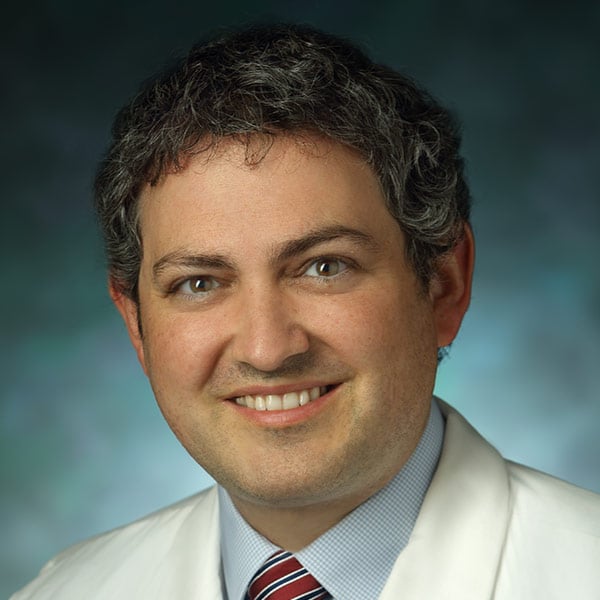
An Emergency Medicine/Critical Care Perspective on Global Health

Global health means many different things to different people. For some, the term brings to mind the public health efforts to provide access to clean drinking water and sanitation in the fight against diarrheal illnesses in low- and middle-income countries (LMICs). For others, it evokes mental images of short-duration, high-volume surgical missions to treat debilitating conditions that overwhelm local surgical capacity. And for many, global health raises suspicion about “medical vacations”—voyeuristic trips to exotic locations to see patients with dramatic conditions and to perform outside one’s scope of practice—that do more to boost the ego of the high-income country (HIC) visitors than to benefit the LMIC patients or clinicians being visited.
When we talk about global health, it’s useful to start with a common definition. The Consortium of Universities for Global Health defines global health as “an area for study, research, and practice that places a priority on improving health and achieving equity in health for all people worldwide. Global health emphasizes transnational health issues, determinants, and solutions; involves many disciplines within and beyond the health sciences and promotes interdisciplinary collaboration; and is a synthesis of population-based prevention with individual-level clinical care.” 1
Put on such a large scale, it can be daunting to think about what one lowly emergency physician and intensivist could possibly do to “improve health and achieve equity in health for all people worldwide.” But we as specialists in emergency medicine and critical care (EM/CC) have a unique knowledge base, skill set, and clinical insight can make us invaluable collaborators in global health efforts.
There’s certainly a need. LMICs are home to 80% of the world population, and there are stark disparities in outcomes for emergency conditions and critical illness (ECCIs) between HICs and LMICs. Emergency conditions account for over half of all deaths worldwide, and the mortality rate of emergency conditions is 36% higher in low-income countries (LICs) than HICs.2 And ICU patients with sepsis in LMICs are more than twice as likely to die compared with those in HICs.3 A large part of these disparities results from inequities in access to emergency and critical care. Some LMIC settings have only 2% of the ICU beds and 1% of the ambulances that are available for the same sized population in an HIC.4
One reason that these disparities have persisted is that, historically, advancing emergency and critical care have not been global health priorities.5 Instead, global health efforts traditionally focused on specific conditions, including diarrheal illnesses, maternal and child health, and infectious diseases like AIDS, tuberculosis and malaria. This emphasis reflected social, political, and economic interests and assumptions, including the belief that Western-style clinical medicine was not cost-effective or practical in low resource settings, and thus should not be prioritized. That trend was epitomized by the United Nations’ Millennium Development Goals in 2000.
The result was the development of “vertical programs” focusing on specific conditions without building the infrastructure to provide comprehensive care for the full spectrum of illnesses and injuries encountered on a population level.6 Eventually, the global health community came to recognize the paternalism inherent in a global health agenda determined by HIC policymakers, researchers, and clinicians, and imposed on LMIC medical communities and patient populations.
At the same time, researchers challenged the assumptions underlying that agenda. Several landmark studies that were highlighted in the second edition of the World Health Organization’s Disease Control Priorities in Developing Countries, published in 2007, demonstrated the feasibility, clinical effectiveness, and cost effectiveness of emergency and critical care and surgery in LMICs. The same year, the World Health Assembly passed Resolution 60.22, which emphasized the importance of providing timely and effective care to those who need it and urged countries to establish formal and integrated trauma and emergency-care systems.
Since then, the global health community has begun to acknowledge the importance of critical illness and critical care medicine (defined in 1974 by Peter Safar as “acutely life-threatening illnesses and injuries” and “the triad of resuscitation, emergency care for life-threatening conditions, and intensive care,” respectively).7 More recently, a World Federation of Societies of Intensive and Critical Care Medicine task force emphasized that critical care is “dedicated to the comprehensive management of patients having, or at risk of developing, acute, life-threatening organ dysfunction… [that focuses on] pathophysiology and support of organ dysfunction more than the specific management of the diseases responsible… to prevent further physiologic deterioration.”8
As EM/CC specialists, we appreciate that critically patients may die while awaiting a definitive diagnosis, and that early empiric treatment saves lives. Over the last decade, this clinical reality has increasingly gained traction in global health circles, as well. Still, there is a lot of work to be done to build emergency and critical care capacity in LMICs. The lack of robust surveillance data collection has left sizable gaps in our knowledge of the epidemiology, treatment patterns, and clinical outcomes of ECCIs in LMICs.9 Some studies have shown that protocolized care can improve outcomes for critically ill patients in LMICs10, while others have suggested that the protocols proven effective in HICs may not have the same benefit when applied in different settings to patients with different pathophysiology in LMICs.12-14
So, what do we as EM/CC specialists have to offer in the world of global health? Our clinical acumen in resuscitation and management of critically ill patients throughout the course of their critical illness is invaluable, both at the bedside and in policy conversations when many stakeholders do not have our level of clinical insights. We also see that ECCIs are not defined by a particular setting of care and recognize that it is incumbent on us to bring the necessary care to our patients wherever they are located. At the same time, we know that we need to adapt our practice patterns to our settings and available resources. And we appreciate that a great resuscitation alone will not help our patients if they don’t have access to a full chain of survival, including appropriate definitive treatments, support care and rehabilitation services.
If we want to contribute to the mission of global health, there are several things that we can do. As emergency medicine and critical care develop as medical specialties in LMICs, a number of fruitful educational partnerships have contributed to establishing training programs and support knowledge exchange between HICs and LMICs. The proliferation of virtual lectures has made this infinitely easier, although it is especially challenging to be sure that you are teaching material that is comprehensible and relevant to your audience when you are speaking over video chat. Research collaborations that are attuned to the local priorities in LMICs can advance our understanding of optimal treatment of ECCIs in low resource settings and help to guide resource allocations and capacity building agendas. And in fledgling emergency medicine and critical care communities, we can be insightful mentors and advisors. Even without directly engaging with our LMIC colleagues, we can advocate for equitable access to educational materials through FOAM (ie, free open access medical education), open-access journals, and tiered registration costs or scholarships for LMIC participants in academic conferences.
Through educational partnerships, research collaborations, mentorship, and advocacy, we can leverage our EMCC expertise to truly contribute to “improving health and achieving equity in health for all people worldwide.”
References
- Koplan JP, Bond TC, Merson MH, et al. Towards a common definition of global health. Lancet. 2009 Jun 6;373(9679):1993-5.
- Razzak J, Usmani MF, Bhutta ZA. Global, regional and national burden of emergency medical diseases using specific emergency disease indicators: analysis of the 2015 Global Burden of Disease Study. BMJ Glob Health. 2019 Mar 30;4(2):e000733.
- Vincent J-L, Marshall JC, Ñamendys-Silva SA, , et al. Assessment of the worldwide burden of critical illness: the Intensive Care Over Nations (ICON) audit. The Lancet Respir Med. 2014 May;2(5):380-6.
- Austin S, Murthy S, Wunsch H, , et al. Access to urban acute care services in high- vs. middle-income countries: an analysis of seven cities. Intensive Care Med. 2014 Mar;40(3):342-52.
- Schell CO, Gerdin Warnberg M, Hvarfner A, et al. The global need for essential emergency and critical care. Critical care. 2018;22(1):284.
- Hsia R, Razzak J, Tsai AC, et al. Placing emergency care on the global agenda. Ann Emerg Med. 2010 Aug;56(2):142-9.
- Safar P. Critical care medicine—quo vadis? Crit Care Med. 1974;2(1):1-5.
- Marshall JC, Bosco L, Adhikari NK, et al. What is an intensive care unit? A report of the task force of the World Federation of Societies of Intensive and Critical Care Medicine. J Crit Care. 2017 Feb;37:270-6.
- Diaz JV, Riviello ED, Papali A, et al. Global critical care: moving forward in resource-limited settings. Ann Glob Health. 2019 Jan 22;85(1):3.
- Jacob ST, Banura P, Baeten JM, et al. The impact of early monitored management on survival in hospitalized adult Ugandan patients with severe sepsis: a prospective intervention study*. Crit Care Med. 2012 Jul;40(7):2050-8.
- Diaz-Soto MP, Morgan BW, Davalos L, et al. Premature, opportune, and delayed weaning in mechanically ventilated patients: a call for implementation of weaning protocols in low- and middle-income countries. Crit Care Med. 2020 May;48(5):673-9.
- Rello J, Leblebicioglu H. Members of ESGCIP. Sepsis and septic shock in low-income and middle-income countries: need for a different paradigm. Int J Infect Dis. 2016 Jul;48:120-2.
- Andrews B, Semler MW, Muchemwa L, et al. Effect of an early resuscitation protocol on in-hospital mortality among adults with sepsis and hypotension: a randomized clinical trial. JAMA. 2017 Oct;318(13):1233-40.
- Mantena S, Rogo K, Burke TF. Re-examining the race to send ventilators to low-resource settings. Respir Care. 2020 Sep;65(9):1378-81.
Adam Laytin, MD, MPH
Johns Hopkins University School of Medicine



